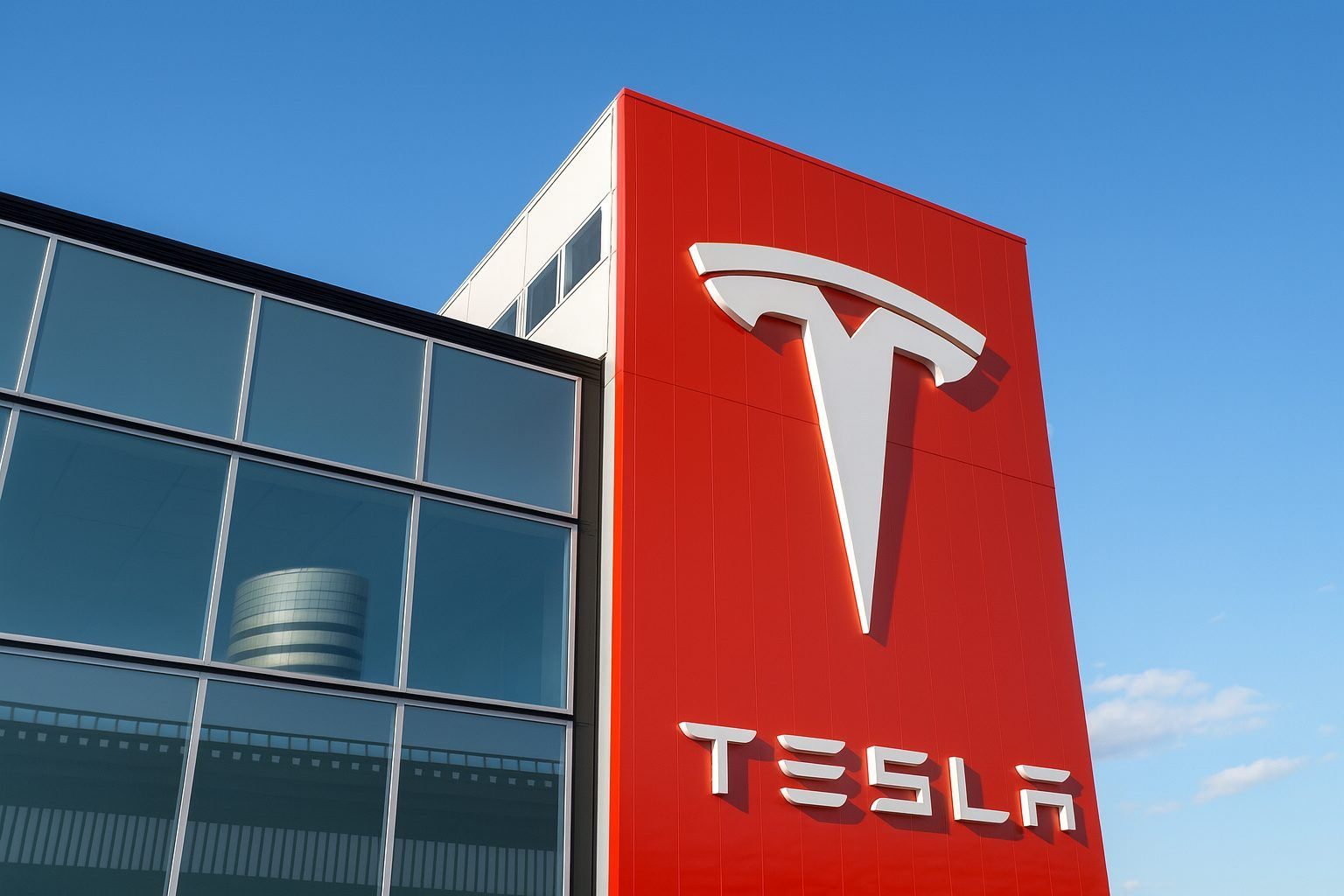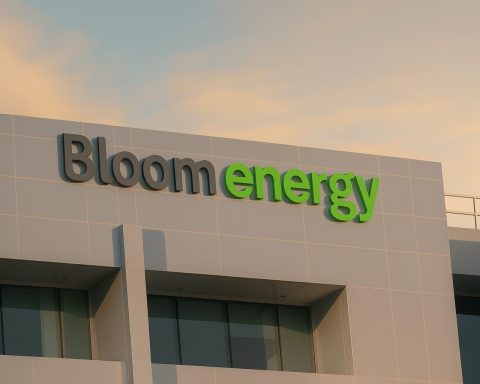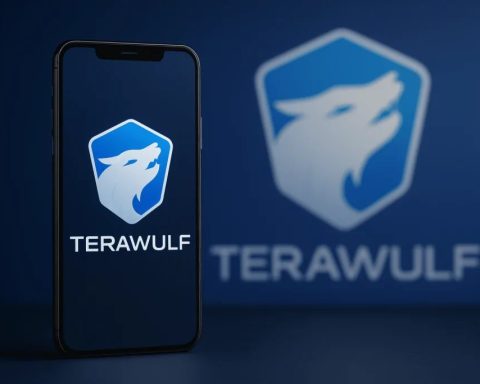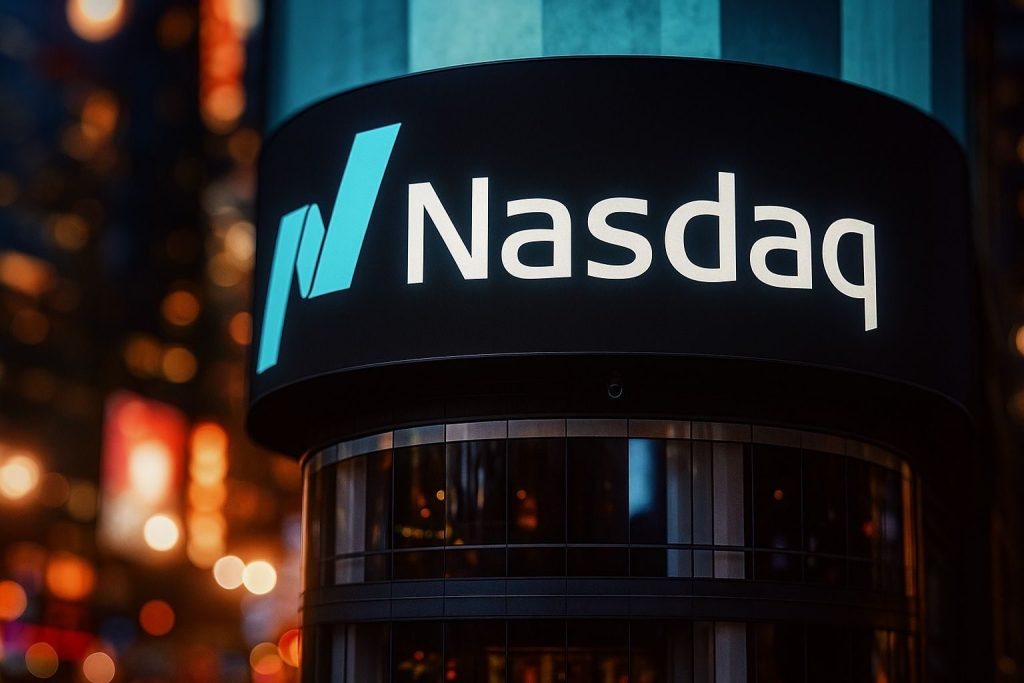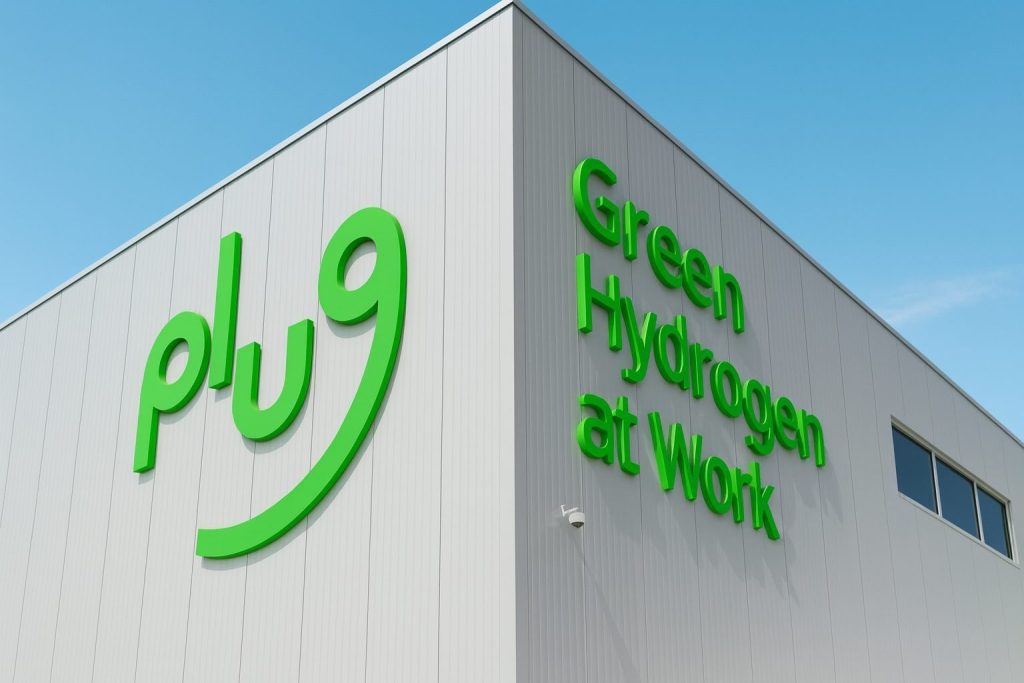Tesla, Inc. (NASDAQ: TSLA) is giving investors a volatile ride again today as Wall Street weighs Elon Musk’s bold artificial-intelligence chip ambitions against mounting electric‑vehicle headwinds in Europe and China.
As of around 14:40 UTC on Tuesday, November 25, 2025, Tesla stock is trading near $413.75, down roughly 1% on the day and easing back after a nearly 7% surge on Monday that added about $90 billion to the company’s market value. [1]
Below is a structured rundown of everything that matters for Tesla stock today — including fresh news from November 25, key analyst calls, and the evolving AI‑vs‑EV narrative that now dominates the TSLA story.
Tesla stock price today: TSLA cools after Monday’s AI-fueled spike
- Current price: about $413.75
- Previous close (Monday):$417.78 [2]
- Intraday range so far: roughly $411–$419
- Market cap: around $1.3–1.4 trillion, firmly in “mega‑cap” territory. [3]
According to Barchart data, Tesla has: [4]
- Rallied ~22.9% over the last three months, far outpacing the Dow’s ~2.3% gain.
- Gained ~18.5% over the past 12 months, versus ~3.8% for the Dow.
- But is only up about 3.5% year‑to‑date, lagging the Dow’s roughly 9.2% rise.
In other words, TSLA has roared back in the last quarter but still trails broader blue‑chip benchmarks for 2025 as a whole, underscoring how dependent the stock has become on periodic bursts of AI‑related enthusiasm.
Monday’s big move came after Musk used X (formerly Twitter) to aggressively reframe Tesla as an AI‑chip powerhouse, driving a wave of buying that today is partly being digested through profit‑taking and new, more cautious analyst notes. [5]
Musk’s AI chip roadmap takes center stage
The tweet that moved the market
Over the weekend, Elon Musk reminded investors that Tesla has had its own AI chip and board‑engineering team “for many years”, with “several million” AI chips already deployed across its vehicles and data centers. [6]
Key points from Musk’s comments and subsequent coverage:
- Tesla is currently using its AI4 chips in cars.
- The company is “close to taping out” AI5 and has started work on AI6, aiming to bring a new AI chip design into volume production roughly every 12 months. [7]
- Musk claimed Tesla expects to eventually build AI chips at higher volumes than all other AI chips combined, positioning the company as a challenger to traditional semiconductor players. [8]
Financial media from Investopedia to Kiplinger and Finbold highlighted this AI‑first messaging as the immediate catalyst for Monday’s nearly 7% gain in Tesla stock. [9]
Street reactions: “Must own” AI play — but with caveats
Today’s commentary shows Wall Street still digesting that AI narrative:
- Melius Research reiterated Tesla as a “must‑own” growth stock, arguing the world is “about to change dramatically” as autonomous driving and AI scale up. [10]
- Piper Sandler recently reaffirmed an Overweight rating and $500 price target after a hands‑on demo of Full Self‑Driving (FSD) v14 at Tesla’s Fremont facility. The firm described a flawless robotaxi ride and called autonomy a key upside driver. [11]
- Stifel Nicolaus lifted its target to $508, also leaning heavily on Tesla’s robotaxi and autonomy roadmap. [12]
- Wedbush included Tesla in its top 10 tech stocks to own into year‑end, grouping it with Nvidia, Microsoft and other AI leaders while stressing that the firm does not see an AI bubble yet. [13]
Meanwhile, an in‑depth piece at Primary Ignition argues that the Tesla investment narrative is transitioning from “EV maker” to “AI infrastructure and chip player”, pointing to Musk’s semiconductor roadmap and the company’s AI‑driven Optimus and robotaxi ambitions. [14]
Reality check: AI5 chip delay to 2027
Balancing Musk’s ultra‑aggressive AI roadmap, an automotive industry report today from MarkLines notes that Tesla’s AI5 self‑driving computer won’t reach volume production until around mid‑2027, roughly two years later than previously suggested timelines, because the underlying A15 chip is still in the design stage. [15]
That delay underscores a central tension for TSLA bulls and bears:
- The AI story is extremely powerful, and markets are rapidly pricing Tesla like a high‑growth AI + robotics platform.
- But hardware rollout and regulatory approvals can move slower than investor optimism, creating significant execution risk.
EV demand and regional headwinds: Europe and China struggle
While AI headlines drove Monday’s rally, today’s news flow has been dominated by old‑fashioned EV fundamentals — and not in a good way.
European sales plunge and BYD’s surge
A new analysis from CoinCentral reports that Tesla’s European registrations slumped 48.5% year‑over‑year in October, with just 6,964 vehicles registered across the EU, EFTA and UK. [16]
Highlights from that report:
- Tesla’s European market share fell from 1.3% to 0.6%.
- Chinese rival BYD sold 17,470 vehicles in Europe, up 206.8% YoY, boosting its share from 0.5% to 1.6% — more than double Tesla’s. [17]
- The overall European car market grew 4.9%, meaning Tesla is shrinking in a growing market. [18]
The same piece notes that Tesla is also battling a three‑year low in Chinese sales, fierce local competition from Nio and Li Auto, and ongoing price wars, all while some consumers report avoiding the brand due to Elon Musk’s politics. A Global EV Alliance poll cited in the article suggests about 41% of EV drivers worldwide would avoid Tesla for political reasons, with especially strong resistance in the US and Germany. [19]
Subsidy risk in the US and China
Adding pressure, Mizuho this morning cut its Tesla price target to $475 from $485, maintaining an Outperform rating but flagging substantial policy risk: [20]
- The bank sees potential reductions in US EV subsidies, and
- warns of possible 50% cuts to Chinese EV subsidies in 2026.
Given that the US accounted for roughly 37% of Tesla’s Q3 2025 sales and China about 34%, both markets are highly sensitive to policy changes. Mizuho also notes that at around $417–$418 per share, Tesla is trading at a price‑to‑earnings multiple near 280–290, well above its fair‑value models. [21]
Q3 deliveries: “best quarter” but still below last year
On the production side, Tesla actually hit record Q3 2025 numbers, with the company’s own IR release confirming that it: [22]
- Produced 447,450 vehicles,
- Delivered 497,099 vehicles, and
- Deployed 12.5 GWh of energy storage — all record levels.
However, a Reuters preview noted that even with a tax‑credit‑driven rush in the US, full‑year 2025 deliveries are expected around 1.6 million, roughly 10% below 2024, and Q3 deliveries are still about 6% below the same quarter last year. [23]
Earlier in the year, Tesla’s Q1 2025 deliveries dropped 13% year‑over‑year to 336,681 vehicles, marking its weakest quarter since 2022 before volumes recovered later in the year. [24]
All of this reinforces a key point: demand growth for EVs is no longer a straight line, and Tesla’s regional mix and policy exposure matter just as much as its AI headlines.
Fundamentals after Q3 2025: record volumes, softer margins
Beyond units, investors today continue to parse the October 22 Q3 2025 earnings that kicked off this latest leg of the Tesla rally.
Data compiled by Barchart and MarketBeat show that in Q3 2025 Tesla: [25]
- Posted revenue of about $28.1 billion, up roughly 11–12% year‑over‑year.
- Generated free cash flow strong enough to lift its cash balance to around $41.6 billion, up nearly $4.9 billion sequentially.
- Delivered EPS of $0.50, slightly ahead of the $0.48 consensus but down from $0.72 in the same quarter a year ago as prior price cuts and EV competition squeezed margins.
- Reported net margins around 5.5% and return on equity around 6.6%.
Third‑party analysis from GuruFocus highlights the margin picture more directly:
- Gross margin: ~17%
- Operating margin: ~5%
- Net margin: ~5–5.5%
All solid, but far from the hyper‑profitable profile Tesla enjoyed at the peak of the last EV boom. [26]
On the positive side, Tesla maintains a very strong balance sheet, with: [27]
- Debt‑to‑equity ratios in the 0.07–0.17 range,
- Current ratio around 2.0, and
- An Altman Z‑Score above 16, implying low bankruptcy risk.
This combination of slowing profit growth but extremely solid finances is fueling a key debate: is Tesla’s AI and energy‑storage optionality enough to justify its premium multiple?
Big money and insider signals: Thiel, McClain and options traders
Peter Thiel rotates out of Tesla
A fresh report today reveals that billionaire investor Peter Thiel made a notable shift in Q3 2025, selling around 208,000 Tesla shares, worth roughly $72 million at an average price near $347. [28]
His fund also:
- Completely exited a 538,000‑share Nvidia position (~$94 million), and
- Used only part of the proceeds to establish new positions in Apple and Microsoft, totaling about $43 million, leaving over $120 million in cash. [29]
The move is broadly interpreted as a defensive rotation from high‑growth AI names (Tesla, Nvidia) toward “safer” megacap tech — a reminder that some sophisticated investors are locking in gains even as others pile into the AI narrative.
Politicians and insiders trimming stakes
MarketBeat flagged that Representative Lisa C. McClain (R‑Michigan) disclosed a small sale ($1,001–$15,000) of Tesla shares on October 31, alongside similar‑sized sales in several other stocks. While trivial in size for TSLA, it adds to a pattern of politician trading that retail investors increasingly track. [30]
The same report highlights recent insider sales at Tesla, including:
- SVP Xiaotong Zhu selling 20,000 shares at an average around $363.75,
- Director James Murdoch selling 60,000 shares near $422.68,
with insiders having sold over 82,000 shares worth more than $33 million over the last three months. [31]
Options traders ride the volatility
If you needed confirmation that Tesla remains a magnet for aggressive options trading, GuruFocus describes a call‑option buyer who scored a 71% profit in a single day: [32]
- They bought Nov 28, $420 calls at $7.20 when TSLA was around $408.13.
- By Monday’s close at $417.78, those calls were worth $12.30, generating about $516,000 in mark‑to‑market profit on a $728,000 outlay.
Heavy speculative flows like this amplify TSLA’s already high beta (around 2.0–2.2) and volatility, creating rapid price swings around news days like today. [33]
How Wall Street values Tesla now
Despite all the excitement, consensus across most data providers is surprisingly cautious.
Analyst consensus and price targets
Recent compilations from Finbold, MarketBeat, CoinCentral and Barchart paint a consistent picture: [34]
- Consensus rating: roughly “Hold”, based on about 34–41 analysts.
- Distribution: around 14 Buy / 10 Hold / 10 Sell in some datasets; others show slightly different mixes but still skewing only modestly bullish.
- Average 12‑month price target:
- Finbold: $383.37 (about 8% downside from current levels).
- Barchart: $386.63 (similar story).
- MarketBeat: $394.31.
By contrast, top‑end bullish targets include:
- Piper Sandler: $500 (Overweight). [35]
- Melius Research: $520 (Buy). [36]
- Stifel Nicolaus: $508 (Buy). [37]
These elevated targets are heavily predicated on autonomy, robotaxis, AI chips and the Optimus robot, rather than just car sales.
Valuation: priced like a high‑growth AI platform
Tesla’s valuation metrics today look more like a hyper‑growth software or AI company than a carmaker: [38]
- P/E ratio: roughly 280–290.
- Price‑to‑sales (P/S): around 15.
- Price‑to‑book (P/B): around 17.
- P/E/G (price/earnings‑to‑growth): near 16–17, suggesting the multiple is rich even relative to growth expectations.
GuruFocus notes that Tesla’s three‑year revenue growth rate (~20% a year) remains strong, but one‑year earnings growth has turned negative (~‑21%), reflecting margin pressure and heavy investment in AI and capacity. [39]
At today’s price around $413–$414, Tesla is trading above most analyst price targets, indicating that the market is already pricing in a substantial chunk of the AI and autonomy upside story. [40]
Shareholder backdrop: Musk’s $1 trillion pay package and AI control
Just a few weeks ago, Tesla shareholders approved Elon Musk’s new pay package, valued at up to $1 trillion if he hits a series of ambitious milestones, including: [41]
- Pushing Tesla’s market cap to $8.5 trillion by 2035,
- Delivering 12 million vehicles per year, and
- Deploying one million robotaxis and one million humanoid robots.
The package was approved with over 75% of votes cast in favor, cementing Musk’s central role in Tesla’s AI and robotics pivot and potentially increasing his long‑term voting control of the company.
Shareholders also signaled support — though with notable abstentions — for a potential Tesla investment in xAI, Musk’s separate AI startup behind the Grok chatbot, raising questions about how tightly integrated Tesla will become with Musk’s broader AI ecosystem. [42]
For Tesla stock, these moves underscore that:
- AI and robotics are no longer side projects, but core to both compensation and strategy.
- Investors are explicitly betting on Musk, not just the company’s existing EV franchise.
Key risks and catalysts investors are watching after today
Today’s news flow crystallizes a few key themes for TSLA going forward:
- AI chip execution vs. delay
- Regulatory decisions on autonomy
- Primary Ignition notes that the Dutch regulator RDW faces a February 2026 deadline to decide on Tesla’s driver‑assistance systems, a key milestone for European robotaxi plans. [45]
- EV subsidies and demand sensitivity
- Valuation and volatility
- Sentiment divide: retail vs. institutional
- Some analysts and commentators (e.g., Seeking Alpha’s “Doesn’t Get Enough Praise by Retail Investors”) argue that energy storage and robotaxis are underappreciated, supporting a bullish long‑term view. [50]
- Others, like Mizuho and macro‑focused investors such as Thiel, appear more cautious, shifting capital into less volatile megacap tech. [51]
Bottom line on Tesla stock for November 25, 2025
Today, Tesla stock is pausing after a dramatic AI‑driven rally, as investors digest:
- Musk’s sweeping AI chip claims,
- A tangible delay in AI5 volume production,
- Weak October EV data in Europe and ongoing Chinese pressure, and
- A mixed but broadly cautious Wall Street valuation picture.
Whether TSLA’s next big move is higher or lower will likely hinge on proof that its AI ambitions can translate into scalable, profitable products — robotaxis, Optimus robots, and AI chips sold at scale — while navigating real‑world demand and regulatory risks in its core EV business.
For investors and traders, the setup after today is clear:
- Short‑term: Expect volatility, with news on AI chips, subsidies, and autonomy regulations capable of driving sharp moves in either direction.
- Long‑term: The stock increasingly trades as a high‑risk, high‑reward AI‑and‑robotics platform, not just as an automaker — and its valuation reflects that.
Nothing in this article is financial advice; anyone considering TSLA should carefully assess their own risk tolerance, time horizon, and diversification before making decisions.
References
1. www.kiplinger.com, 2. markets.financialcontent.com, 3. markets.financialcontent.com, 4. markets.financialcontent.com, 5. www.kiplinger.com, 6. www.kiplinger.com, 7. www.investopedia.com, 8. www.kiplinger.com, 9. www.investopedia.com, 10. finbold.com, 11. finviz.com, 12. finbold.com, 13. seekingalpha.com, 14. primaryignition.com, 15. www.marklines.com, 16. coincentral.com, 17. coincentral.com, 18. coincentral.com, 19. coincentral.com, 20. www.investing.com, 21. www.investing.com, 22. ir.tesla.com, 23. www.reuters.com, 24. www.notateslaapp.com, 25. markets.financialcontent.com, 26. www.gurufocus.com, 27. www.marketbeat.com, 28. coincentral.com, 29. coincentral.com, 30. www.marketbeat.com, 31. www.marketbeat.com, 32. www.gurufocus.com, 33. www.gurufocus.com, 34. finbold.com, 35. finviz.com, 36. www.investing.com, 37. finbold.com, 38. www.marketbeat.com, 39. www.gurufocus.com, 40. finbold.com, 41. www.businessinsider.com, 42. www.businessinsider.com, 43. finbold.com, 44. www.marklines.com, 45. primaryignition.com, 46. www.investing.com, 47. coincentral.com, 48. www.gurufocus.com, 49. www.gurufocus.com, 50. seekingalpha.com, 51. www.investing.com
